Infanticide in Russia: the History of infanticide from the beginning of Christianity to the beginning of the 20th century
Categories: Children | History | World
By Pictolic https://pictolic.com/article/infanticide-in-russia-the-history-of-infanticide-from-the-beginning-of-christianity-to-the-beginning-of-the-20th-century.htmlSome laws of society seem unshakable to a civilized person. For example, taking the life of a child is a terrible crime. But at one time even the royal laws could not eradicate it in any way. Be careful, the content may frighten and upset you.
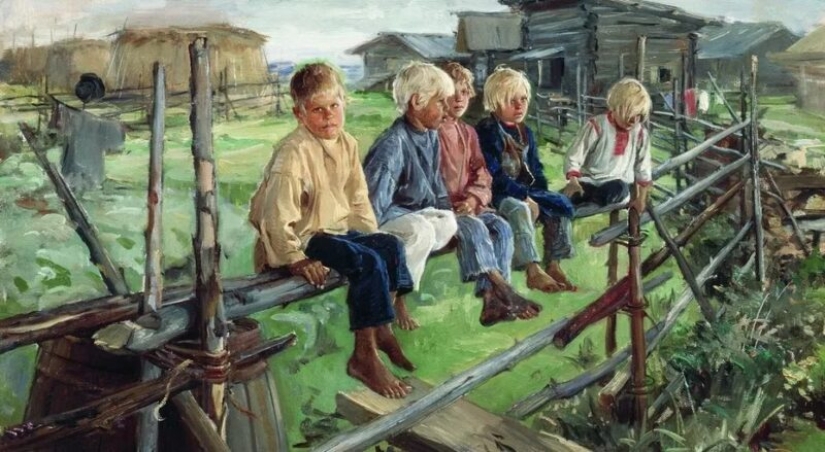
Prince Yaroslav the Wise of Kiev, who ruled vast lands, including those that are now part of Russia, held a magnificent European court. More precisely, it was kept by the prince's wife, Ingigerda, in Orthodoxy — Irina.
At this court, many disgraced princes found refuge, including very children - the sons of the English king, whom Princess Irina's uncle was going to kill, who seized their father's lands. She had such an attitude towards the disgraced princes that it could be said that she collected them and warmed them like homeless kittens. And she especially took care that they were not killed — almost every one of them had this sword of Damocles hanging over them.
As for Yaroslav himself, he, as you know, published a collection of laws known as the Russian Truth, in which the child's family was allowed to take revenge for the murder of someone else's child. The murder of their child was not considered at all: the children were only the property of the fathers and completely in their will.
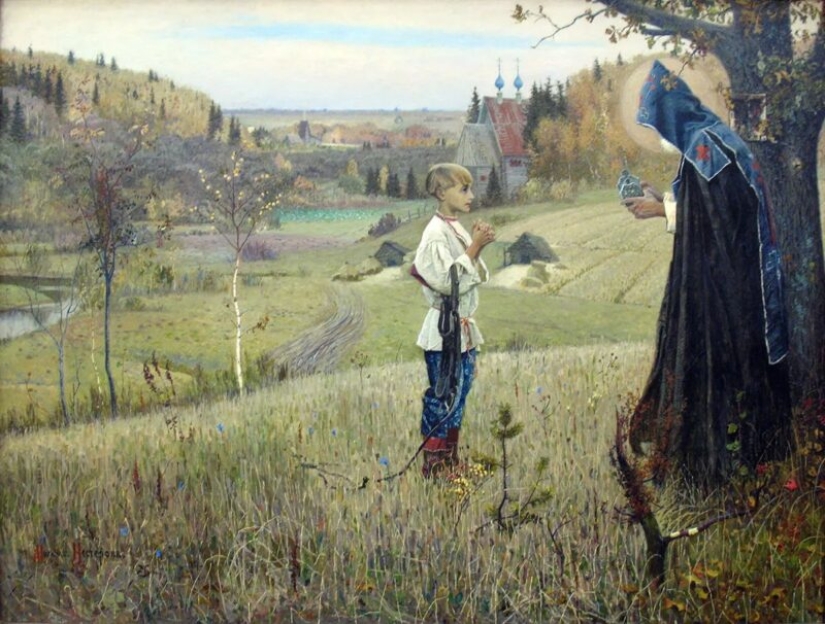
"The Vision of the boy Bartholomew", Mikhail Nesterov
Practically only the church fought against such a phenomenon as the intentional or accidental murder of children. For the first ten or twelve centuries, the massacre of infanticide (the so-called systematic murder of children) was constantly on the agenda of the Christian church expanding its influence.
Special sermons had to be devoted to the deliberate and widespread murder of girls — in many places in Europe, both Western and Eastern, they did not see the value in girls and did not want to spend resources on them.
We also had to fight to prevent children from being beaten to death. But in fact, the church could only exhort and impose not too burdensome church punishments - otherwise its authority began to wobble or the well-being of the family where the child was dying was put at risk.
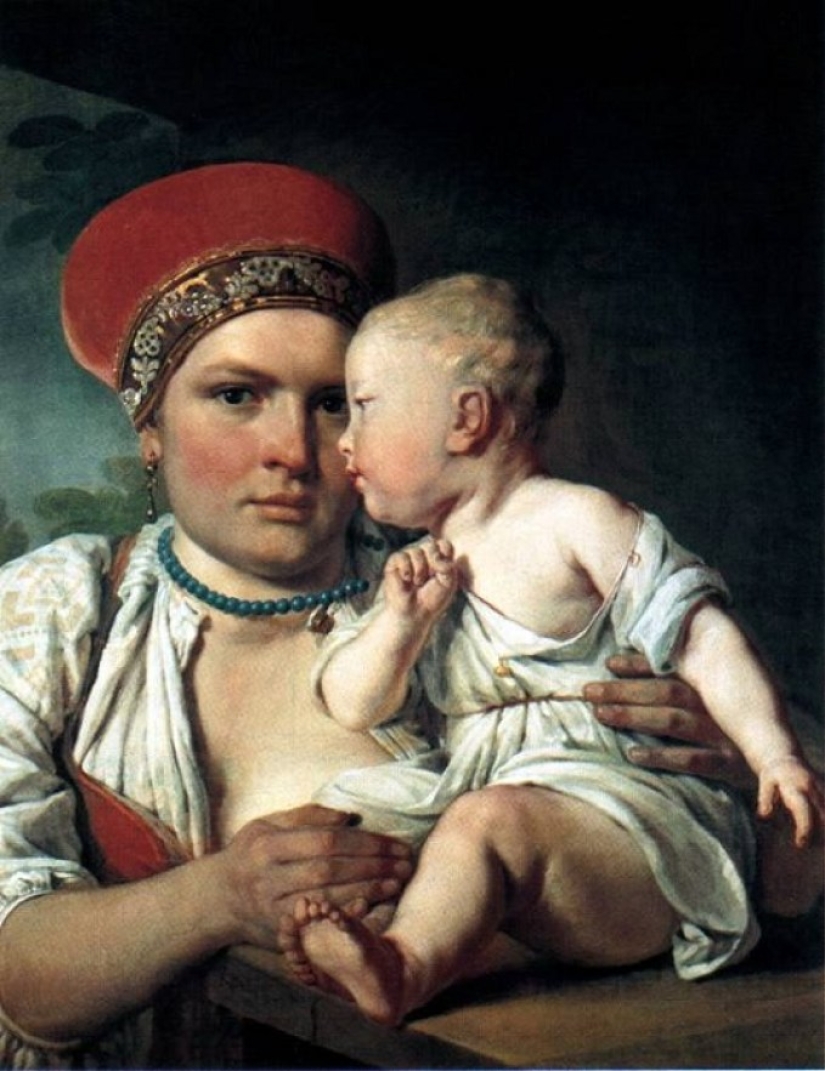 "The nurse with the child", Alexey Venetsianov, 1830s
"The nurse with the child", Alexey Venetsianov, 1830s
Nevertheless, it was the church that was to blame for the infanticide. With the advent of Christianity in the now Russian lands, children began to be divided into legal and illegal. The mothers of the second became sinners, and the children themselves, born out of wedlock, were the fruits of sin.
Society did not just condemn or mock illegitimate children and their mothers. It gave them a real bullying. It was believed that everyone had the right to beat or even rape a "lawless" child. Just according to the mood. Their mothers fared no better. Many conceived out of wedlock hid pregnancy until the last, then to drown, strangle, less often - to throw a child to someone unnoticed.
Strangely enough, Ivan the Terrible struggled with infanticide as a result of family violence. In his "Domostroi", he, considering the right to beat the household inalienable for a man, nevertheless limited the practice of violence to those who could not injure and even more so kill women and children. For many, this book has remained unknown.
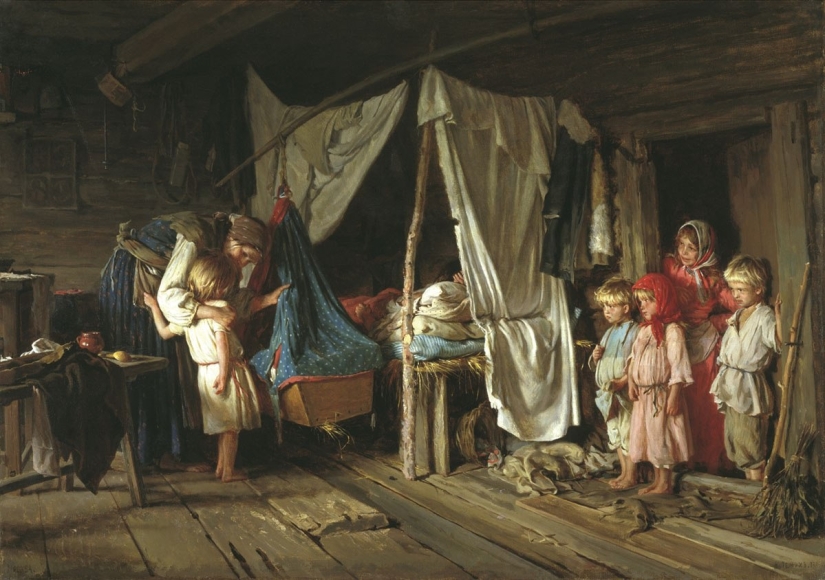 "New Acquaintance", a painting by Karl Lemoch, 1885
"New Acquaintance", a painting by Karl Lemoch, 1885
The people continued to beat at random, as well as ignore the fact that according to the "House-building" (which many now consider almost the law by which they lived in the past), the father is obliged to provide children with food, clothing and the opportunity to study. "Domostroy" was a purely philosophical work that had no legislative force.
Tsar Alexei the Quietest, known for his cruel laws, introduced punishments for infanticide mothers. For the murder of a legitimate child, a year in prison was due; for an illegal one, the mother was killed without any mercy, since she was punished not for murder, but for concealment of fornication. Thus the tsar decided to fight for morality.
He, like many other legislators of the Christian world, simply ignored the fact that most often defenseless servants took root in the house of the master of the servant (this was often the result of a series of rapes).
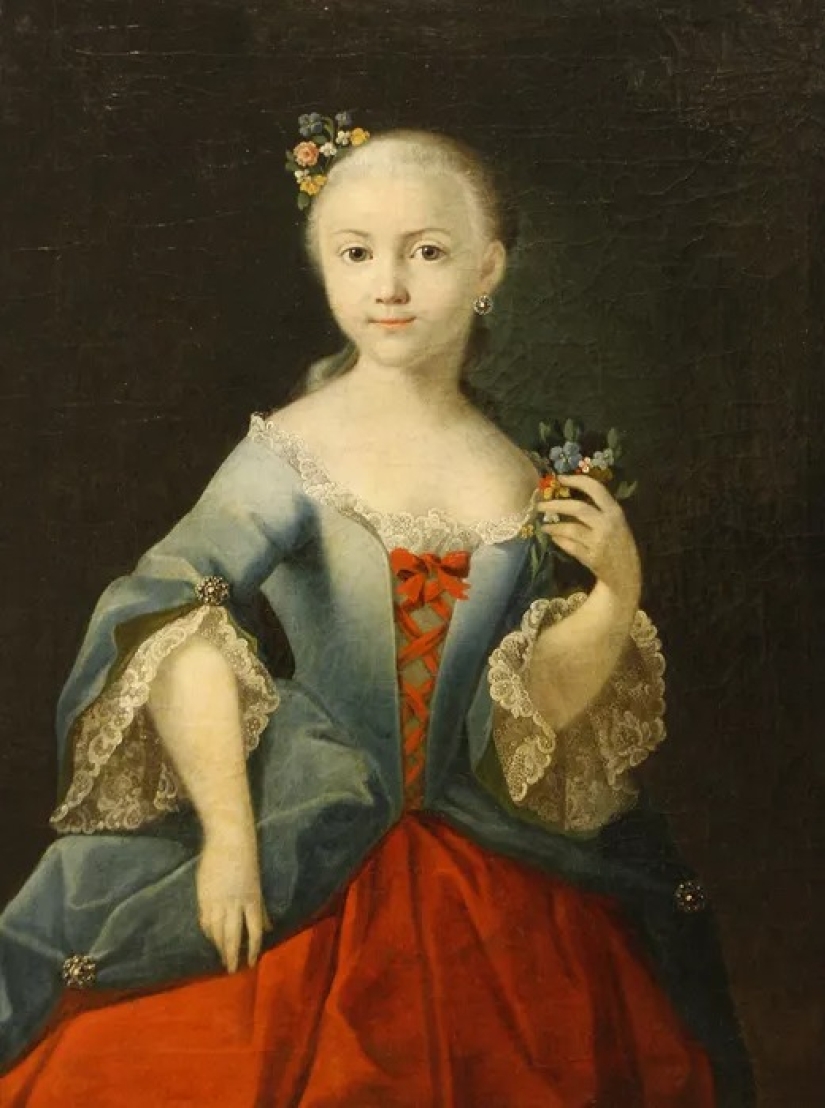
Portrait of Elizabeth Petrovna Streshneva as a child. 1760
A little later, in order to protect the lives of illegitimate children, Peter I and his followers opened more and more shelters for foundlings. They overflowed instantly. Rapes did not stop, women gave birth to children who could turn their lives into hell, and drowned them in ditches or carried them out into the cold. Moreover, the latter practice was in use even in relation to children born in marriage — this was how the issue was resolved with the fact that not everyone can feed the family.
By the end of the 18th century, there were ideas that there were children from dysfunctional families. They included not only children with single mothers, but also children who were not actually supported or could not be supported by their parents, for example, due to their father's addiction to alcohol. Such children were called "misbegotten".
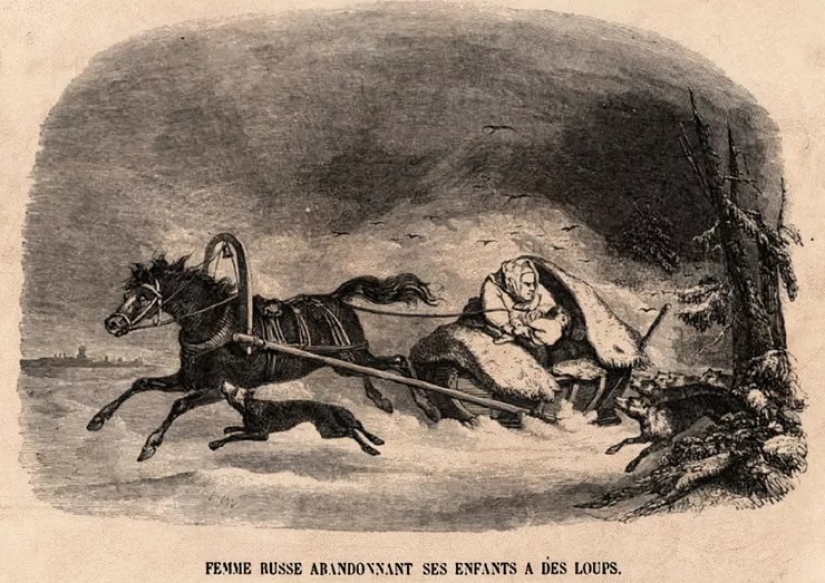
A Russian woman throws her children to be eaten by wolves, an engraving by Charles-Michel Geoffroy.
The idea that the word "illegitimate" should be avoided began to strengthen, although it did not become popular. It gave the illusion that the child's life itself is illegal and, therefore, is not protected by anyone.
The legal provisions of the Law of 1754-1766 "On such fathers and mothers who will kill their children" provided for tougher penalties for children born in marriage, killed by mothers or fathers. Depending on the class and the brutality of the murder, the murderous parent was sentenced to the whip, exile to a convent, hard labor, and so on.
Nevertheless, if a child "died himself" due to intentional neglect or a few days after a severe beating, the murder was not actually investigated and punished in any way. The value of childhood increased dramatically in the nineteenth century, due to progressive and even sometimes idealistic ideas. Ideas spread slowly from richer and more enlightened families to poorer ones.
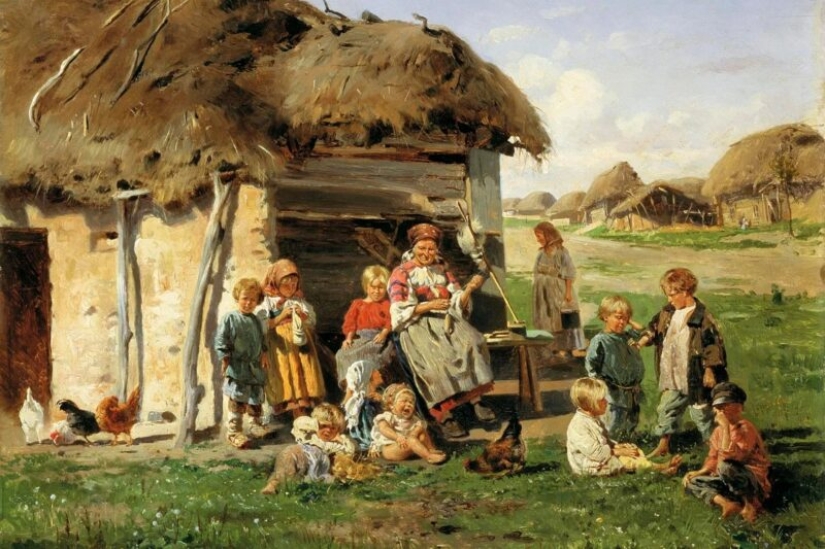
"Peasant children", Vladimir Makovsky
At the same time, completely enlightened noble parents at the beginning of the century normally had in their heads the inadmissibility of physical punishments for their children, as well as concern for their health and mental development, and orders to flog small serfs who were guilty of something, serving or just, for example, stealing tasty and interesting things.
The murder of a serf child (and especially a large number of them) could even be condemned by neighboring landlords, but no one believed at the same time that the owner had no right to flog a serf to death. The neighbors did not stop greeting Lieutenant General Lev Izmailov, who kept a harem of girls (some of whom were his own daughters from serfs).
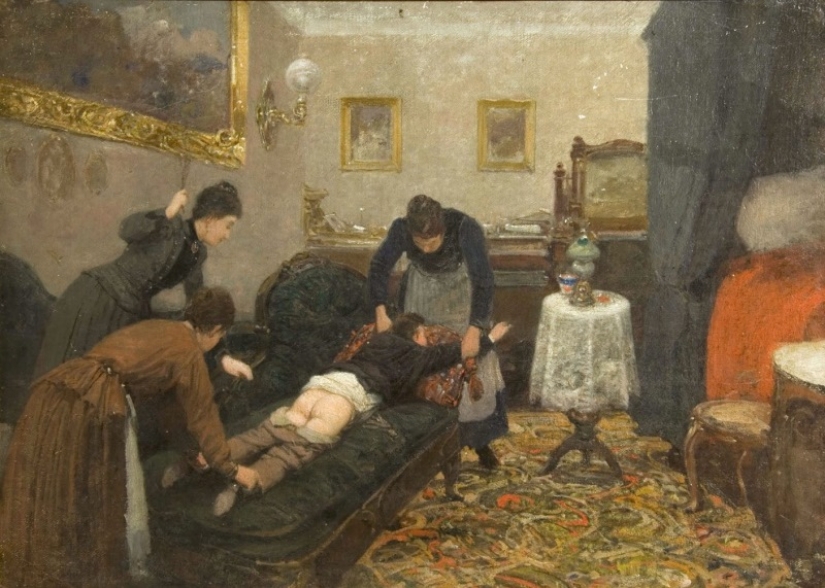 "Spanking", Pavel Kovalevsky, 1880
"Spanking", Pavel Kovalevsky, 1880
Meanwhile, there was an acute problem with the number of illegitimate children and children whose parents killed from hunger. The abolition of serfdom in 1861, which looks beautiful on paper, was in fact accompanied by the loss of peasant families of the land from which they were fed. The landlords allocated the worst plots to the slaves who had received their will. The child began to be seen not as working hands, but as an extra mouth.
At the end of the 19th century "to the people" — a lot of progressive, educated men and women went to open zemstvo hospitals and rural schools. Constant close communication with the less educated segments of the population, which they had previously managed to avoid in the city, led to a lot of desperate memos, articles for thematic magazines, just letters and diary entries.
In the village, in-laws were sometimes encouraged to kill their own grandchildren. Hatred of the daughter-in-law, who gave birth "too often" and "too much", is noted in the work "Ivan's Life" by Olga Tyan-Shan, a researcher of family life in the Russian village.
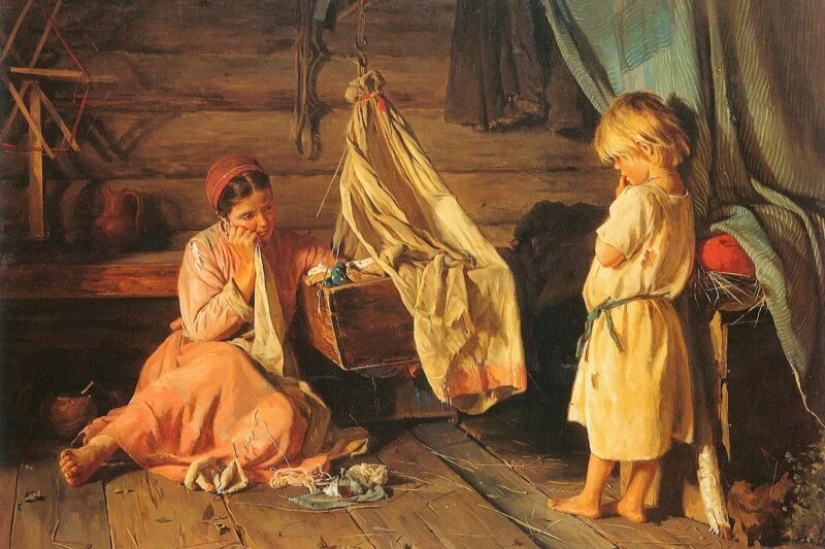
"At the cradle", Kirill Lemokh
Ethnographers much later recorded the memories of women, how they got rid of little "freeloaders". Rolled in the snow to freeze out. They were fed from the first days with chewing (chewed bread) instead of milk or not fed at all. They drove needles into the fontanel. They pretended that they "fell asleep", that is, they accidentally piled on and strangled in their sleep.
The latter was generally such a frequent practice that every case of a sleepy child was necessarily considered in court. And... most often the mother was found innocent. Almost everyone could fall asleep from fatigue — women's sleep was shorter than men's, women's work is hard and continuous. This was all practiced with children from full families. With extramarital ceremonies were even less - they drowned like puppies.
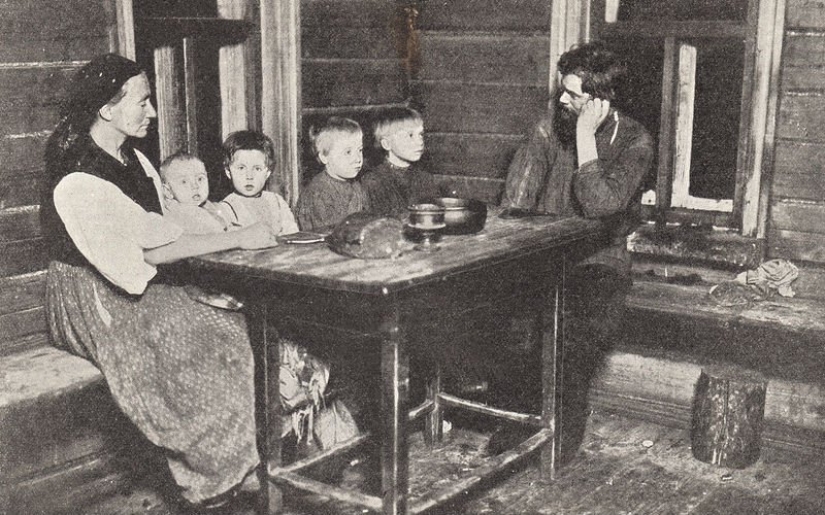
In addition to the fact that the children were in constant danger from their immediate environment, especially their families, the state itself could kill them. From the age of seven, a child who committed a serious crime (major arson, murder of another child) could already be sentenced to deprivation of life. The bar, however, was raised to twenty-one by the nineteenth century.
Peasants deprived of land left en masse for cities, hired servants or went to factories. Girls and women received pennies for their work at the same time — this was considered normal. Those who managed to live without selling themselves in the short hours of rest on the streets, became a constant object of harassment by factory bosses of different caliber or the owners and the owner's sons.
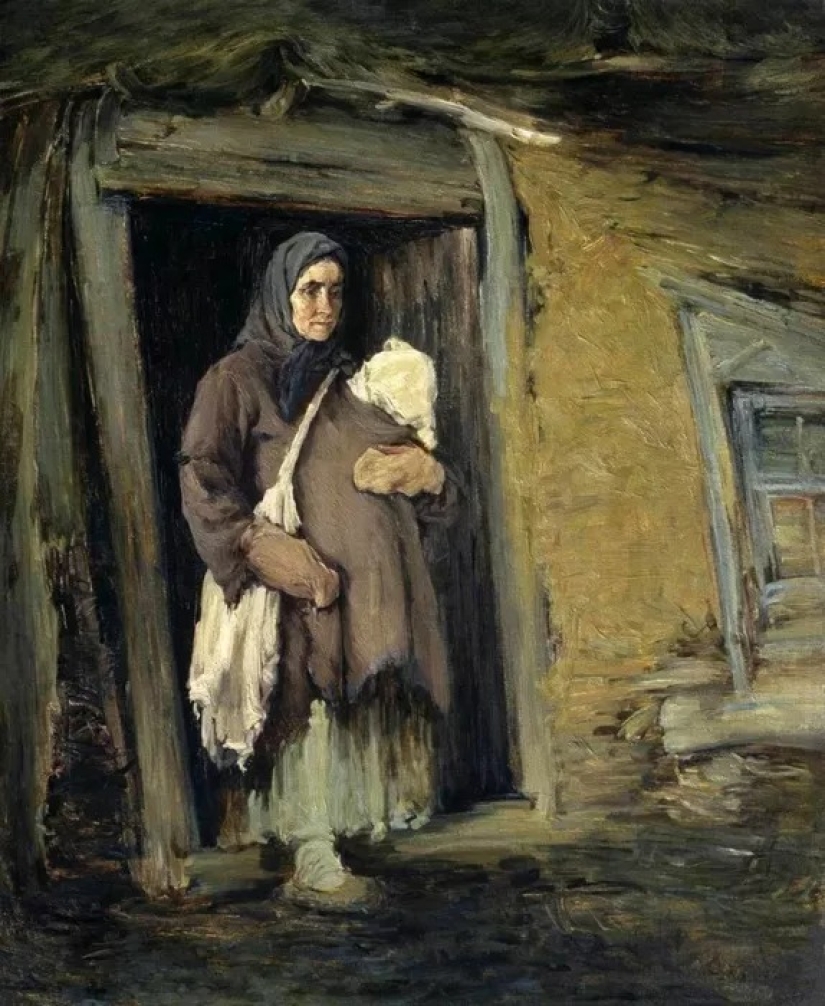
"Peasant woman coming out of the hut", Ivan Tvorozhnikov
An illegitimate child meant not only shame (although not as terrible as in the time of Peter and earlier), but also starvation for both. And again, mothers chose - let me survive at least, and the child will go to God without suffering ...Infanticide acquired terrible proportions - in parallel with the seemingly growing cult of a happy childhood.
Tsar Nicholas II tried to solve the problem of murders from hunger by the law of 1902. This law provided for the mandatory provision of illegitimate children by their fathers, as well as, if the mother could not earn a living because of the child, and their mothers.
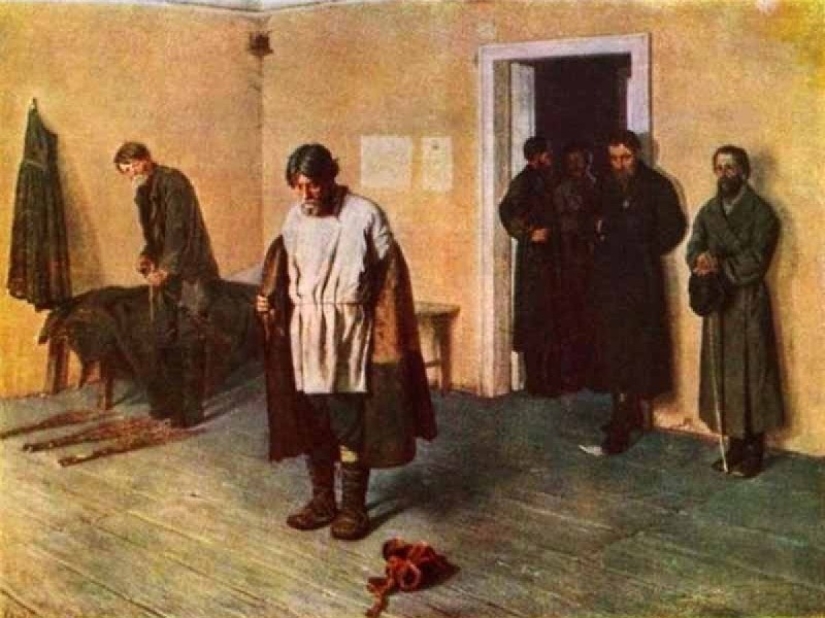 "Before punishment", Sergey Korovin, 1884
"Before punishment", Sergey Korovin, 1884
A lot of court decisions, I must say, were made in favor of the maids dismissed because of the grown belly - and more often before any court, in order to avoid scandals, male owners used the right granted by this law to pay off alimony. That is, they gave a large sum on a one-time basis and demanded not to show their eyes anymore.
But farmhands, peasant women, factory workers could rarely prove in court that they had given birth to exactly who they pointed out — and many had no idea that they had to go to court. In city houses, at least, rumors were constantly circulating about the servants who gave birth to a child from the owner, and her further actions. Peasant women threw babies on their father's doorstep, factory workers took them to an orphanage.
By that time, it was possible, having handed over the child to an infant shelter, to continue to see him and breastfeed him. Few of the factory workers could use it, but of those who used it, many later took the children, getting on their feet.
Organizations of doctors and philanthropists, whose congresses were held one after another at the end of the 19th century, achieved new rules for shelters. They managed to prove that infant mortality is very much dependent on contact with the mother and that the opportunity to find shelter and care for the child at least for a while gives many supposedly morally fallen women the opportunity to get back on their feet.
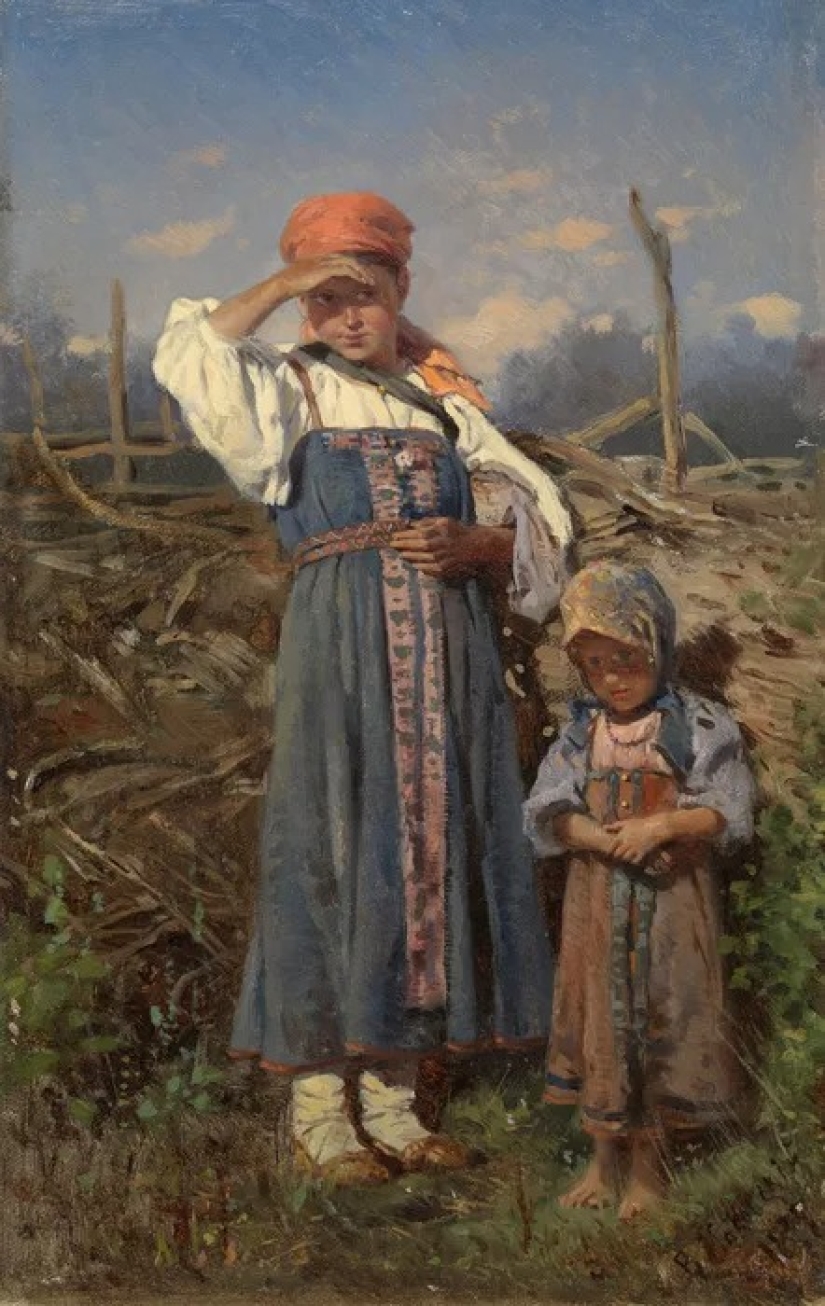
"Peasant girls", Vladimir Makovsky
Alas, the protection of childhood did not go much further than this protection from death, punishments for murder and for proven rapes. Parents calmly used the inalienable, as they saw it, right to beat their children, give them to work or serve so that the money would go to the fathers.
The authorities did not try to ensure compliance with minimum hygiene standards at home, and the children were calmly fed sour porridge, put to sleep in a spoiled bed, were not taken to the doctor to be treated, even when it was possible to do it for free. In fact, only two rights were recognized for children — to life and sexual integrity.
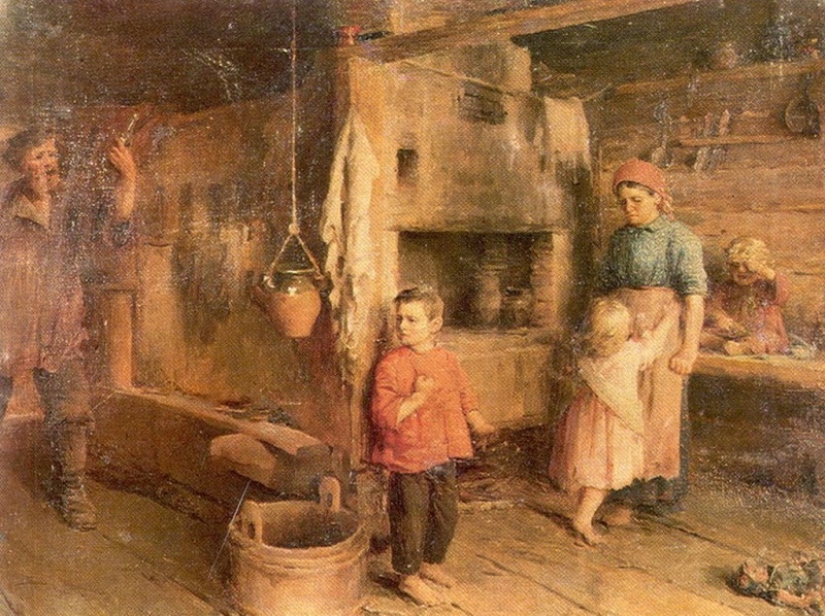 Ivan Gorokhov - "Washed down" (turn of the 19th-20th centuries)
Ivan Gorokhov - "Washed down" (turn of the 19th-20th centuries)
In fact, both were poorly embodied. Drunkenness spread, and drunken fathers, grandfathers, masters beat sons, daughters, grandchildren, and students to death. The child had nowhere to complain if they simply stopped feeding him — there are such testimonies.
Among the poor townspeople, the sale of their own young daughters spread, which so terrified Gorky. Probably, the fathers who sold their daughters, and themselves, speaking in the most dry language, entered into sexual intercourse with them, without being interested in their opinion on this matter. Many children lived in loving families — but for many, childhood was a real hell.
The twentieth century, the century of progress, had to radically change the situation of children and eliminate the dangers from their lives. In many ways, this is what happened. But it was full of bitter pages of childhood history. But there will be another article about this.
Keywords: 20th century | Childhood | Russia | Christianity
Post News ArticleRecent articles

There is never enough space in a child's room. You know, you need a bed, the closet is literally bursting with things, and you ...

Armenian artist Artush Voskanyan paints in the style of mannerism and calls the Italian painter of the XVI century Giuseppe ...
Related articles

In 1947, LIFE magazine photographer Alfred Eisenstadt took a series of photographs at the Swiss resort of St. Moritz, an island of ...

The first wedding night in Russia was arranged in a special way and had a lot of differences from the similar tradition of other ...

Those who have left their mark in the history of cinema, about those about whom I remember with fondness, love and admiration, ...

In our days, the friendship with the ex-partners is normal, civilized and progressive. In this article we are told in journals and ...